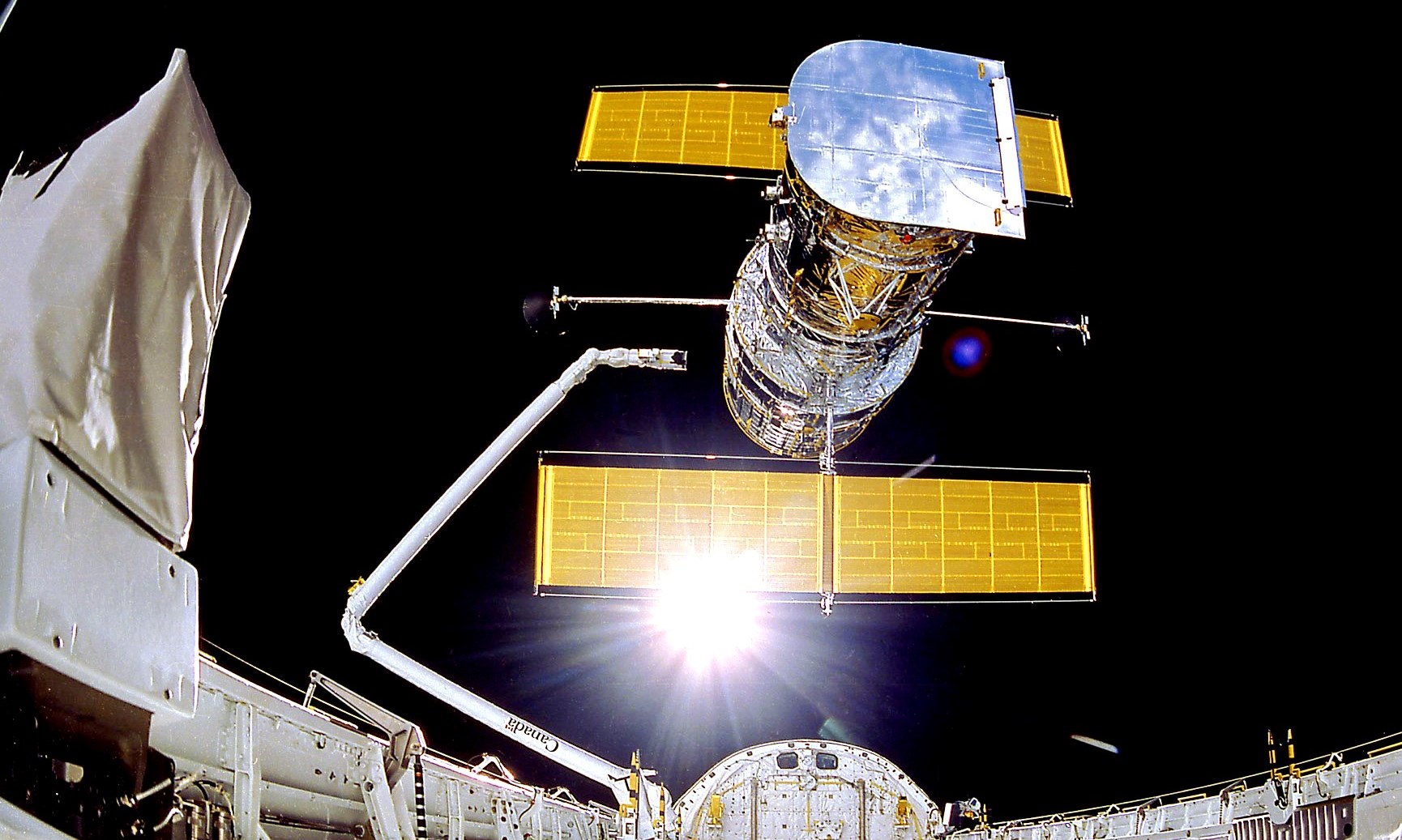
Engineers have identified the possible cause of the Hubble Space Telescope's computer problems, and they plan to start implementing a fix on Thursday (July 15).
Hubble has been out of action since June 13, when it suffered a glitch with its payload computer, which controls and monitors the iconic scope's science instruments. After performing a range of analyses and tests over the past month, the Hubble team now thinks it may have found the cause — an issue with the Power Control Unit (PCU).
Like the payload computer, the PCU resides in Hubble's Science Instrument Command and Data Handling (SI C&DH) unit. The PCU makes sure that the payload computer and its associated hardware have a steady stream of electricity flowing in. It does this using a power regulator and a "secondary protection circuit," which tells the payload computer to shut down if the voltage strays above or below acceptable levels, NASA officials explained in an update today (July 14).
Related: The Hubble Space Telescope and 30 years that transformed our view of the universe
"The team’s analysis suggests that either the voltage level from the regulator is outside of acceptable levels (thereby tripping the secondary protection circuit), or the secondary protection circuit has degraded over time and is stuck in this inhibit state," NASA officials wrote.
The team has already tried, unsuccessfully, to reset the PCU. So the next move is to switch to the backup side of the SI C&DH unit, which has a backup PCU. All of the testing and reviews have been performed ahead of this envisioned fix, which will start on Thursday.
If the switch works, Hubble will likely be able to return to normal science operations a few days later, NASA officials said.
Get the Space.com Newsletter
Breaking space news, the latest updates on rocket launches, skywatching events and more!
This type of fix is not unprecedented. In 2008, the team switched out a different part of the SI C&DH, the Command Unit/Science Data Formatter, after the module failed. Spacewalking astronauts replaced that entire SI C&DH unit in 2009 with the one that Hubble is using now.
Hubble launched to Earth orbit aboard the space shuttle Discovery in April 1990. Astronauts famously fixed its flawed primary mirror during a servicing mission in 1993, and the telescope has been providing jaw-dropping views of the cosmos, and amazing scientific discoveries, ever since.
Mike Wall is the author of "Out There" (Grand Central Publishing, 2018; illustrated by Karl Tate), a book about the search for alien life. Follow him on Twitter @michaeldwall. Follow us on Twitter @Spacedotcom or Facebook.
Join our Space Forums to keep talking space on the latest missions, night sky and more! And if you have a news tip, correction or comment, let us know at: community@space.com.

Michael Wall is a Senior Space Writer with Space.com and joined the team in 2010. He primarily covers exoplanets, spaceflight and military space, but has been known to dabble in the space art beat. His book about the search for alien life, "Out There," was published on Nov. 13, 2018. Before becoming a science writer, Michael worked as a herpetologist and wildlife biologist. He has a Ph.D. in evolutionary biology from the University of Sydney, Australia, a bachelor's degree from the University of Arizona, and a graduate certificate in science writing from the University of California, Santa Cruz. To find out what his latest project is, you can follow Michael on Twitter.









